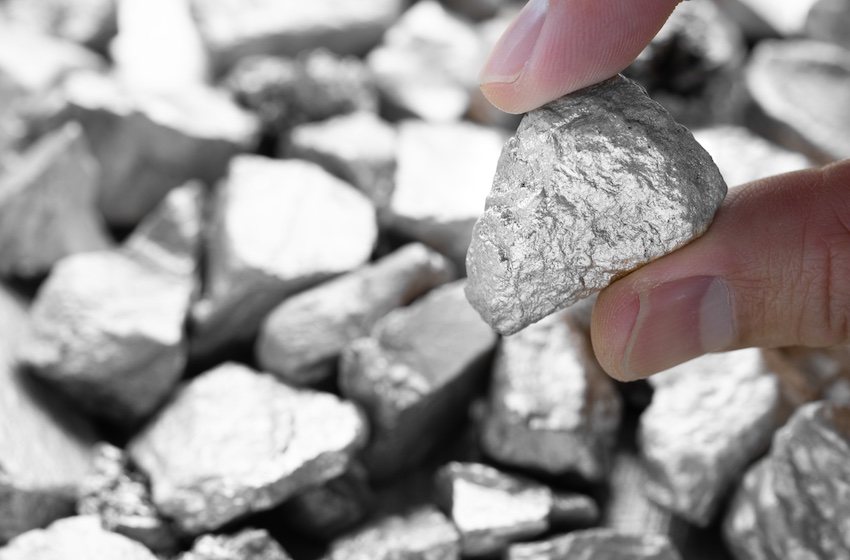Rare Earth Elements: Importance, Depletion, and Mining Challenges

Introduction
Rare earth elements (REEs) are important minerals with unique properties that are used in various industries. This article aims to provide a comprehensive understanding of rare earth, including what they are, where they are found, their significance to humanity, industry, economy, and national security, the impact of their depletion, recycling possibilities, the presence of rare earth in Laos, and the challenges faced in mining these valuable resources. By addressing these topics, this article aims to highlight the importance of rare earth elements and the complexities associated with their extraction.
Rare Earth: Definition, Global Distribution, and Exporting Countries
Rare earth elements consist of seventeen similar chemical elements like cerium, dysprosium, neodymium, and yttrium. They are not actually rare, but they are often found in low concentrations, making their extraction challenging.
Rare earth deposits can be found worldwide, with significant reserves concentrated in specific regions. China is the largest producer and exporter of rare earth elements, accounting for about 80% of the global supply. China’s dominance is due to its abundant reserves, cost-effective production capabilities, and past investments in the industry. Other countries with notable rare earth deposits include Australia, the United States, Russia, and Brazil.
Importance of Rare Earth Elements
Rare earth elements play a crucial role in advancing technology and driving innovation across various industries. They are essential in the production of electronic devices, renewable energy systems, telecommunications, and high-tech applications. Rare earth elements enable the miniaturization, efficiency, and performance enhancement of devices such as smartphones, tablets, and computers.
These elements are vital in industry, as they are used in catalysts, magnets, lasers, lighting systems, and high-strength alloys. Rare earth elements are also integral to renewable energy technologies like wind turbines, electric vehicle batteries, and solar panels, contributing to global sustainability efforts.
From an economic perspective, rare earth elements have a significant impact. They create job opportunities, fuel innovation, and contribute to economic growth. Industries relying on rare earth elements generate revenue through exports, which can boost national economies and trade balances.
Rare earth elements are of strategic importance to national security and defense systems. They are crucial for the production of advanced military equipment, including radar systems, missile guidance systems, precision munitions, and communication technologies. Ensuring a stable supply of rare earth elements is vital for maintaining technological superiority and national defense capabilities.
On a global scale, rare earth elements contribute to sustainable development goals. They facilitate the transition to renewable energy, enhance energy efficiency, and support the reduction of greenhouse gas emissions. Moreover, rare earth elements are essential for emerging technologies such as electric vehicles, energy storage systems, and advanced healthcare equipment, fostering a more sustainable and interconnected world.
Consequences of Rare Earth Depletion and Recycling Possibilities
The depletion of rare earth elements would have significant consequences for various sectors. Industries heavily reliant on rare earth elements, such as technology, renewable energy, and manufacturing, would face challenges in sourcing essential components. This could result in increased costs, production delays, and hindered technological advancements.
To mitigate these risks, recycling rare earth elements from electronic waste and end-of-life products offers a potential solution. Recycling can help recover valuable materials and reduce dependence on primary mining. However, recycling rare earth elements poses challenges due to the complexity of separating and purifying them from diverse sources. Developing efficient recycling technologies and establishing effective collection and recycling infrastructure are crucial to fully harness the recycling potential of rare earth elements.
Rare Earth in Laos: Economic Recovery and Implications
Laos possesses significant rare earth deposits, offering the potential for economic recovery and development. The discovery of rare earth elements in Laos can stimulate economic growth, generate job opportunities, attract foreign investments, and promote technological advancements.
However, the development of rare earth mining in Laos must prioritize sustainability and responsible environmental management. It is crucial to address concerns related to soil and water contamination, habitat disruption, and waste management. By adopting sustainable practices, Laos can ensure the long-term benefits of rare earth mining while minimizing environmental and social consequences.
Mining Challenges and Comparison with Gold Mining
Finding rare earth elements can be challenging due to their low concentrations and complex geological formations. The exploration process involves geological surveys, remote sensing techniques, and geochemical analysis to identify potential deposits. Finding rare earth elements requires expertise, financial investment, and technological resources.
Mining rare earth elements involves various extraction methods, such as open-pit mining, underground mining, and in-situ leaching. The choice of method depends on factors like deposit characteristics, economic viability, and environmental considerations. Rare earth mining presents unique challenges due to the intricate separation and refining processes required to extract individual elements from the surrounding rock and minerals.
When compared to gold mining, rare earth mining is generally more complex and challenging. Rare earth deposits are typically more dispersed and found in lower concentrations than gold deposits. The separation and purification processes for rare earth elements are highly specialized, involving extensive chemical processes and energy-intensive techniques. Additionally, rare earth mining often generates significant environmental impacts, necessitating careful environmental management.
Conclusion
Rare earth elements are vital to various aspects of human life, industry, economy, and national security. Their global distribution, with China as the largest exporter, highlights their international significance. The depletion of rare earth elements would have profound implications, but recycling offers a potential solution to mitigate supply constraints. Laos’s rare earth deposits hold economic potential, but responsible mining practices are crucial. Finding rare earth elements poses challenges, and their extraction involves complex processes that distinguish it from gold mining. By understanding these aspects, stakeholders can work towards sustainable and responsible utilization of rare earth resources, supporting technological advancements and economic growth while minimizing environmental impacts.




